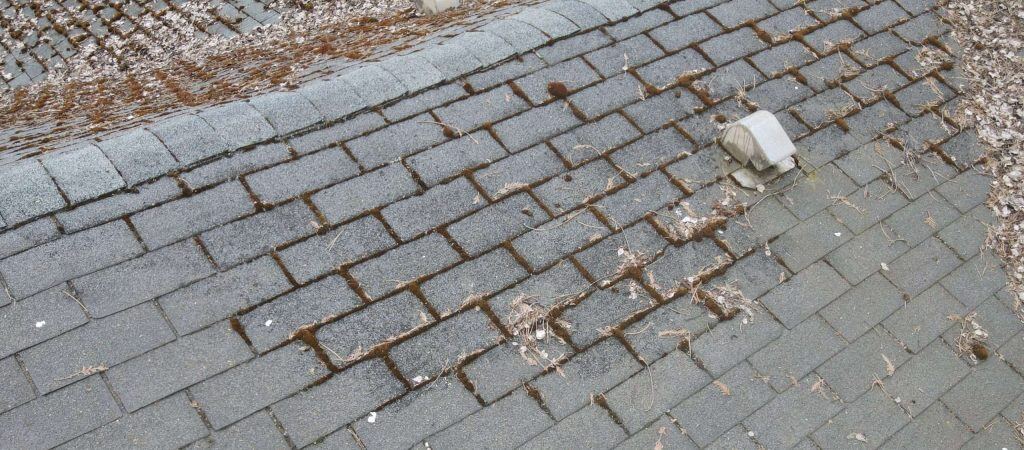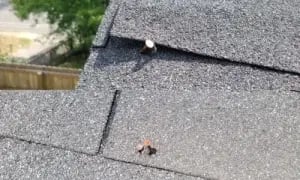
Are you concerned that your roof might be too damaged to make it through Seattle’s rainy season without leaking? Are you worried about potential water damage, mold, or costly repairs as a result of roof leaks?
Roof leaks are not only inconvenient but can also lead to expensive repairs and serious structural damage. Living in a rainy area like Seattle makes roof leaks even more problematic, as constant moisture can worsen already existing leaks and make it easier for new ones to form.
At RoofSmart, we have been repairing and replacing roofs ruined by leaks and water damage for 13 years. From a single leaking pipe boot to water damage spanning an entire roof, we’ve seen it all. Every year, we help hundreds of our satisfied customers get rid of issues on their roofs such as rotting wood, mold, and extensive moss growth—all caused by leaks and excessive moisture.
This article will explain the main causes of leaks and go over different areas on the roof that commonly leak. By the end of this article, you’ll understand which roof issues lead to leaking and how to determine if your roof is leaking so that you can call in professionals to help before the damage worsens.
The main causes of roof leaks
- Wear and tear: Even when installed properly, all roofs have an expiration date. This is especially true for asphalt roofs, which don’t last as long as the others. Near the end of your roof’s life, it is expected that you’ll see signs of wear and tear. This often leads to leaks in the roof, especially in a rainy area like Seattle.
- Mechanical damage: If anything falls on or hits your roof, it can potentially damage it. Most often in the Seattle area, this is due to a tree branch falling on the roof. Hail can also cause damage to the roof, but that’s not as big of a concern here.
- Third-party work: Any work that you get done on your roof might damage the shingles and lead to leaks. Roof work can be any number of things. Maybe you got solar panels installed, or you remodeled your kitchen and had to add a new vent. This also includes getting a solar panel installed or adding an awning.
- Improper installation: It is also possible that your roofing contractor somehow messed up during the installation process and accidentally created a problem area that is extra susceptible to leaks.
- Defective shingles: These can also cause leaks because defective materials are not able to protect the roof properly. However, defective shingles are pretty rare. Usually, leaks are caused by the natural environment or by human error.
Which areas on the roof commonly leak and why?
Certain areas of the roof are more likely to wear out quicker than the shingles do, leading to leaks. These areas include hip and ridge pieces and the ridge vents. These pieces are easy access points for water to enter the roof, especially if they were not installed properly.
Damaged shingles, even if they are still in place, can cause issues. Damage can be due to defects, normal wear and tear, or third-party work on the roof. Areas where the shingles have blown off are also susceptible to leaks. Missing shingles are a big problem because leave areas of the roof exposed to moisture.
Another place that you’ll typically find leaks is anywhere there are penetrations in the roof. This usually comes from third-party work that installed something on the roof. Some examples include:
- Gutter guards
- Vents
- Solar panels
- Skylights
- Nails that are sticking out

Sometimes nails don’t go in all the way during installation, creating a leak point in the roof. Image from Bill Ragan Roofing Company.
In most cases, the items going on your roof will be installed with nails or screws. When adding items to the roof or not following proper installation guidelines, your roof is vulnerable to leaks from all those nail holes. To avoid this, it’s important to hire a professional roofer.
Some contractors working on or around your roof might need scaffolding. But if they secure the scaffolding to the building by screwing it right into the shingles, then that is likely to leak later on.
Any area where you get work done on or around the roof can also become vulnerable to leaks. For example, if you have a multi-level roof and painters or siding installers are up there walking and pivoting on the shingles, that can damage them prematurely. If they tear off the siding and toss it on the roof, that can also lead to leaks.
How can I tell that my roof is leaking?
If you’re noticing wet spots on your ceiling or signs of mold in your attic, those are pretty clear indicators that your roof is leaking.
But, you can’t always tell that there is a leak. Unless there’s a huge hole in your roof or extremely obvious damage to your shingles, it’s hard to tell from the outside that your roof is leaking. You’d have to look for water damage or mold on your ceiling or in the attic to be sure.
The other problem is that if your roof is really steep, it’s likely that you won’t notice any signs of leaking. Instead of dripping down onto your ceiling, the leaking water will run down the roof into the walls.
If your roof is steep, it is a good idea to check for water damage by the walls rather than in the middle of the ceiling.
If you’re walking around on the roof or in the attic and you hear a crunch, then that is an indicator that your roof is leaking. Water-damaged, rotting wood crunches when stepped on.
How can roof leaks be fixed?
If there is only one leak and it is contained to one small section of the roof, then you’ll only need to repair that section.
Depending on the area that’s leaking, the type of repair you need will vary. You might need to replace a skylight and the flashing around it or a small section of the roof.
Sometimes, your roofing contractor will start working on a repair and discover a new issue that wasn’t noticeable before.
If the leaking on your roof is very extensive, you might need to replace the whole roof.
If you’ve identified leaks on your roof but you’re not sure what to do about it, it’s probably a good idea to bring out a professional to assess your roof’s issues and discuss potential solutions.
What to Do Next: Safeguarding Your Roof from Further Issues
Understanding what causes roof leaks and how to detect them early is the first step in protecting your home. By paying close attention to common problem areas like flashing, shingles, and valleys, and acting quickly at the first sign of damage, you can save yourself from costly repairs down the road.
If you think you might have a leak, your next step is to determine if your roof only needs a repair, or if the whole thing should be replaced. To learn more about how to assess which step is best for your home, read our article “Roof Repair vs. Roof Replacement: Which Is Right For Me?”.
Jim Singleterry is the CEO and founder of RoofSmart. He is passionate about getting to the root of each customer's roofing problems and helping them find the right solution for their roof.
Topics:

